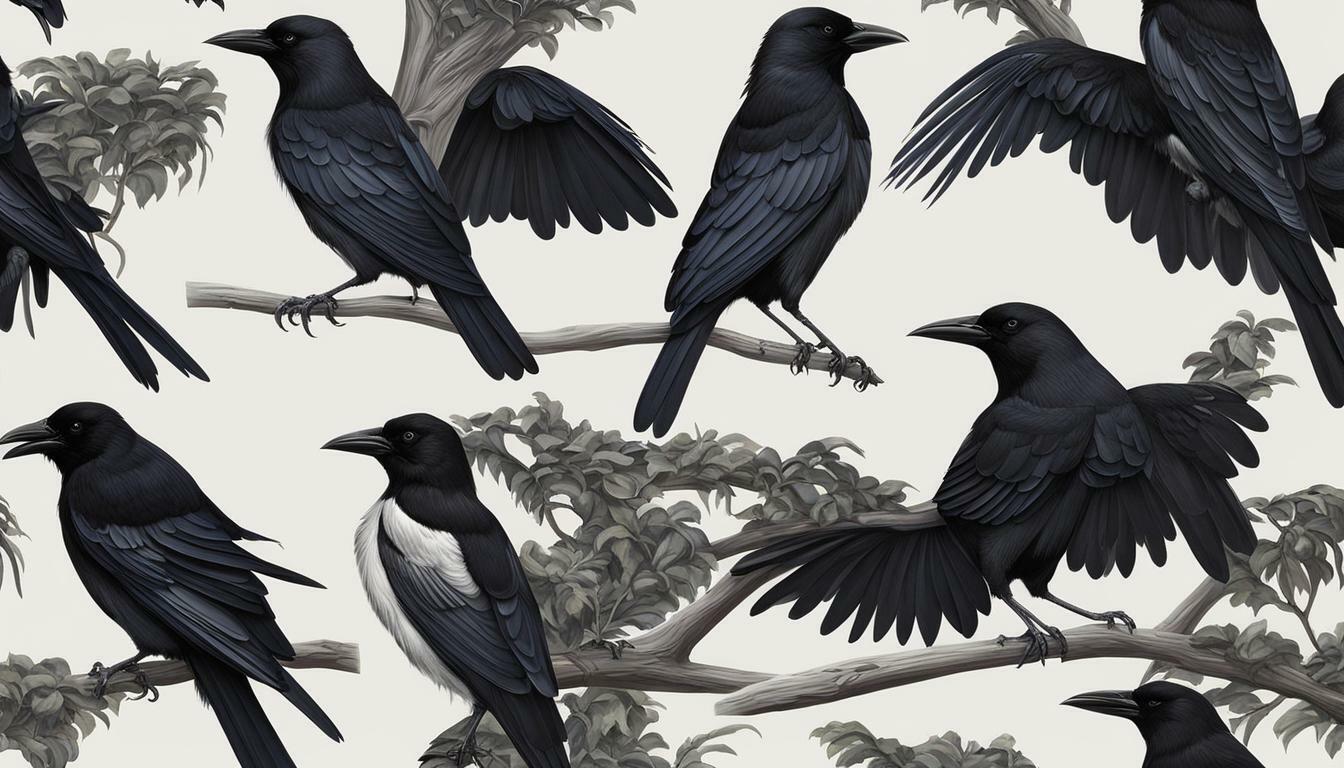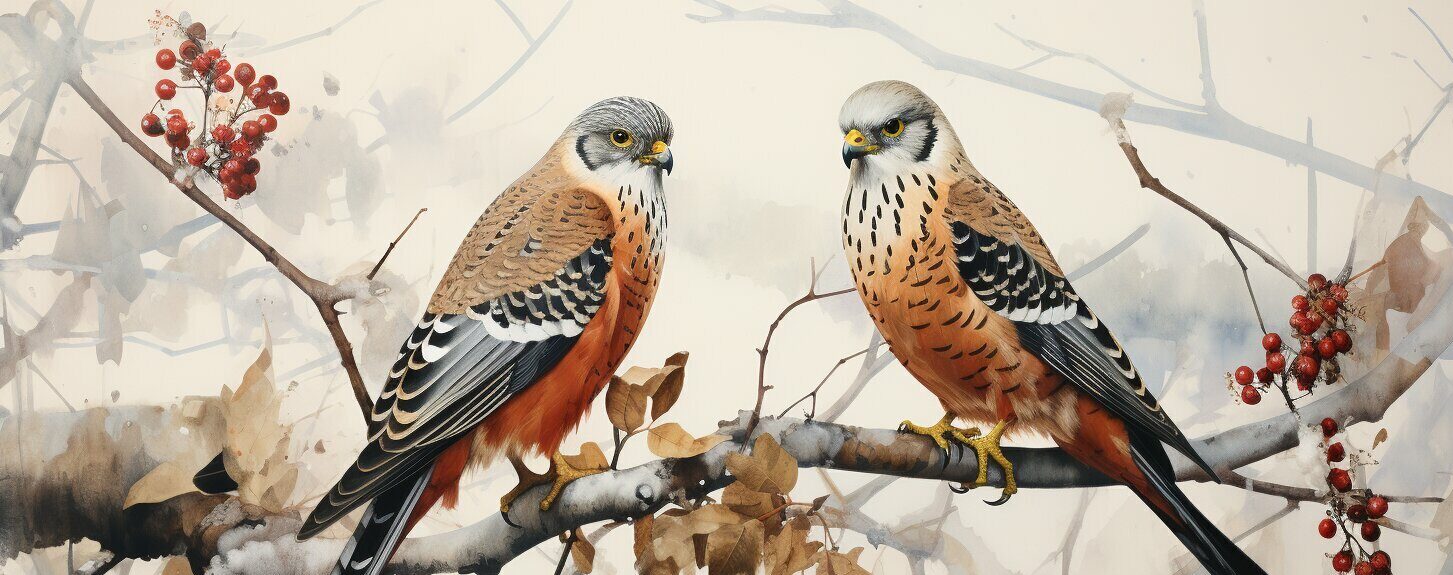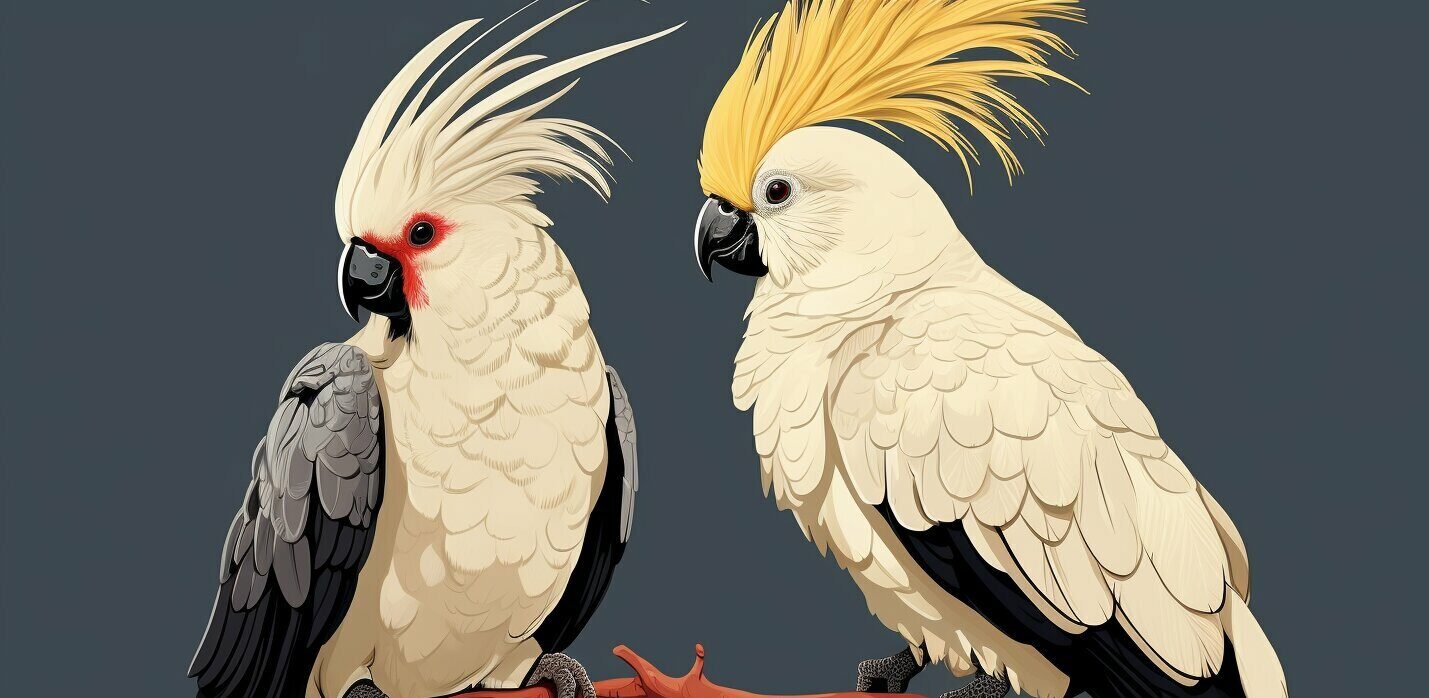Magpies and Crows are two types of birds that are often confused with each other. Although these birds share some similarities, there are also many differences that set them apart. In this article, we will explore the physical characteristics, behaviors, habitats, and distribution patterns of Magpies and Crows. We will also provide practical tips for differentiating these birds in the field.
Whether you are a birdwatching enthusiast or just curious about these fascinating birds, understanding the differences between Magpies and Crows can enrich your appreciation of nature.
Key Takeaways:
- Magpies and Crows are two different types of birds with distinct physical characteristics, behaviors, and habitats.
- Magpies tend to have a more colorful plumage and longer tails compared to Crows, while Crows are typically all black.
- Both birds are intelligent, adaptable, and known for their scavenging tendencies.
- Knowing how to differentiate between Magpies and Crows in the field can enhance your birdwatching experience.
Physical Characteristics of Magpies and Crows
Magpies and crows are members of the Corvidae family of birds and share some common physical characteristics. Both species have a relatively large size, with magpies averaging 18-24 inches in length and crows averaging 17-21 inches. They also have strong, sharp beaks that are highly adapted for feeding and scavenging.
Despite these similarities, there are several distinguishing features between magpies and crows. Magpies have a distinctive black and white plumage, with a long tail and iridescent blue-green feathers that shimmer in the sunlight. On the other hand, crows are completely black, with a slightly curved beak and a fan-shaped tail.
Another way to identify these birds is by their distinctive calls. Magpies have a harsh, chattering call that sounds like “chak-chak-chak”, while crows have a hoarse, guttural caw that is easily recognizable.
In addition to their physical characteristics, magpies and crows also exhibit different behaviors, which we will explore in the next section.
Behaviors of Magpies and Crows
Magpies and crows exhibit distinct behavioral differences that can help identify them in the field.
One of the most noticeable behavioral differences between crows and magpies is their foraging habits. While crows are known for their scavenging tendencies, magpies tend to prefer a mixed diet of insects, small mammals, and fruits. Magpies have been observed caching food for later consumption, whereas crows typically eat their food on the spot.
Additionally, magpies are social birds and often live in large groups called “parliaments,” whereas crows are more solitary creatures. Magpies are highly vocal birds and use a variety of calls to communicate with each other. In contrast, crows typically use a “caw” call to signal danger or territory.
Nesting behaviors also differ between these two species. Magpies build large, domed nests out of twigs and branches, whereas crows construct more open, flat nests. Magpies are also known for their habit of collecting shiny objects to decorate their nests, while crows do not display this behavior.
In terms of social hierarchy, magpies have a more complex social structure than crows. They establish a pecking order within their groups and engage in social grooming behaviors. Crows, on the other hand, have a less structured social system and tend to interact with each other on a more individual basis.
Overall, these differences in behavior can help birdwatchers distinguish between magpies and crows and appreciate the unique characteristics of each species.
Habitat and Distribution of Magpies and Crows
Magpies and crows can be found in a variety of habitats across North America, Europe, and Asia. However, their preferred ecosystems differ.
| Magpies | Crows |
|---|---|
| Magpies thrive in wooded areas, parks, and gardens, where they can forage for insects and small animals. They also prefer open countryside with scattered trees or hedges and can be found at altitudes up to 3,000 meters above sea level. | Crows, on the other hand, prefer open countryside, grasslands, agricultural fields, and coastal regions. They often nest in trees and are adaptable to urban environments, where they scavenge for food. |
Magpies are found throughout Asia, Europe, and parts of North America, while crows have a more extensive range, found across most of North America, Europe, and Asia, as well as parts of Africa.
Despite their overlapping ranges, crows and magpies often compete for resources like nesting sites and food. As a result, their habitats can sometimes overlap, leading to interesting interactions between the two species.
Magpies in Nature
Magpies are social birds and often live in family groups, with each group occupying a territory of up to 10 hectares. These territories are fiercely defended against rival magpies, but other birds like crows are usually tolerated.
Magpies are omnivores and feed on insects, small mammals, seeds, and fruit. They also scavenge for food, and in urban areas, they have been known to raid garbage cans and dumpsters.
Crows in Nature
Crows are highly intelligent and adaptable birds that live in large groups called murders. These groups can consist of up to several hundred birds and are organized hierarchically, with dominant birds at the top of the social ladder.
Crows are omnivores and feed on insects, small animals, fruits, nuts, and seeds. They are also scavengers and have been known to raid bird nests for eggs and nestlings. In urban environments, they feed on garbage and other human waste.
Similarities Between Magpies and Crows
While Magpies and Crows have many differences, they also share some striking similarities:
- Intelligence: Both Magpies and Crows are highly intelligent birds, with the ability to solve complex problems and use tools to obtain food.
- Adaptability: Both species are highly adaptable and can thrive in a variety of environments, from forests to cities.
- Scavenging habits: Both Magpies and Crows are opportunistic feeders, with a tendency to scavenge for food. They will eat a wide range of items, from insects and small animals to carrion and human food scraps.
- Family behavior: Both species are highly social and often form family groups for breeding, foraging, and roosting.
Recognizing these similarities between Magpies and Crows can help birdwatchers appreciate the fascinating complexity of these birds and their roles in the larger ecosystem.
Differentiating Magpies and Crows in the Field
If you are a birdwatcher, distinguishing between Magpies and Crows can be challenging. However, there are a few visual and behavioral cues you can look out for to tell them apart.
Visual Cues
The most noticeable difference between Magpies and Crows is their coloring. Magpies have a distinctive black and white plumage with a long, iridescent tail, while Crows have black feathers all over. Additionally, Magpies have a shorter beak compared to Crows’ longer, curved beaks.
Another key difference is their size. Magpies are smaller than Crows, roughly the size of a pigeon, while Crows are larger and bulkier.
Behavioral Cues
Magpies are known for their acrobatic and playful flight patterns, often flying in a roller-coaster-like fashion. They are also vocal birds, frequently chattering and making a range of sounds, including mimicking other birds.
Crows, on the other hand, are more solitary birds and tend to stick to a territory. They have a distinctive cawing sound and are known for their intelligence and problem-solving abilities.
If you are still having trouble telling them apart, pay attention to their habitat. Magpies typically prefer open, rural areas with trees, while Crows can be found in a wider range of environments, including urban areas.
Conclusion
In conclusion, understanding the difference between Magpies and Crows is crucial for birdwatchers and nature enthusiasts alike. While these two species share some similarities, they have distinct physical characteristics, behaviors, and habitats that set them apart. By knowing these differences, we can better appreciate and enjoy these magnificent birds in their natural environments.
Whether you’re watching Crows and Magpies in your backyard or exploring new habitats, knowing how to differentiate them in the field can make all the difference in your birdwatching experience. Remember to look for key visual cues, listen for their distinct vocalizations, and observe their behavior to make a positive identification.
By deepening our understanding of the Difference Between Magpies and Crows, we can also appreciate the unique qualities of each species, from the intelligence and adaptability of Crows to the distinctive coloration and mischievous nature of Magpies. So next time you’re out birdwatching, keep your eyes and ears open for these two remarkable birds and enjoy the unique qualities they bring to the natural world.
 Skip to main content
Skip to main content


